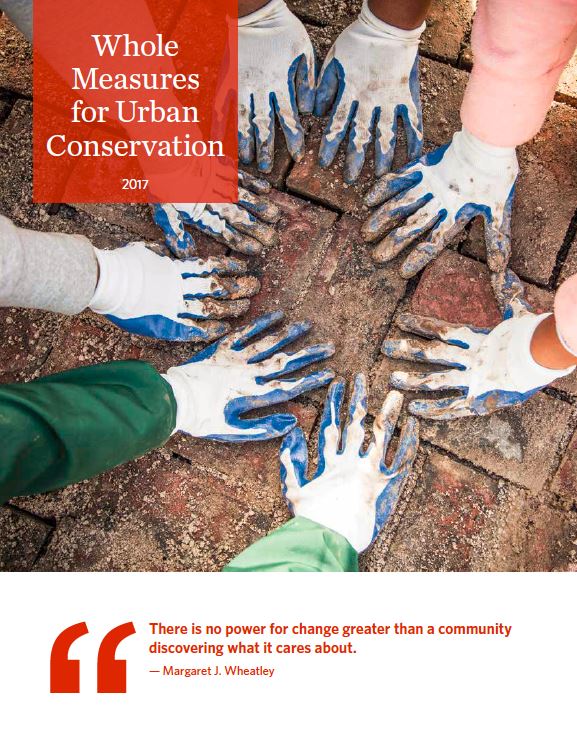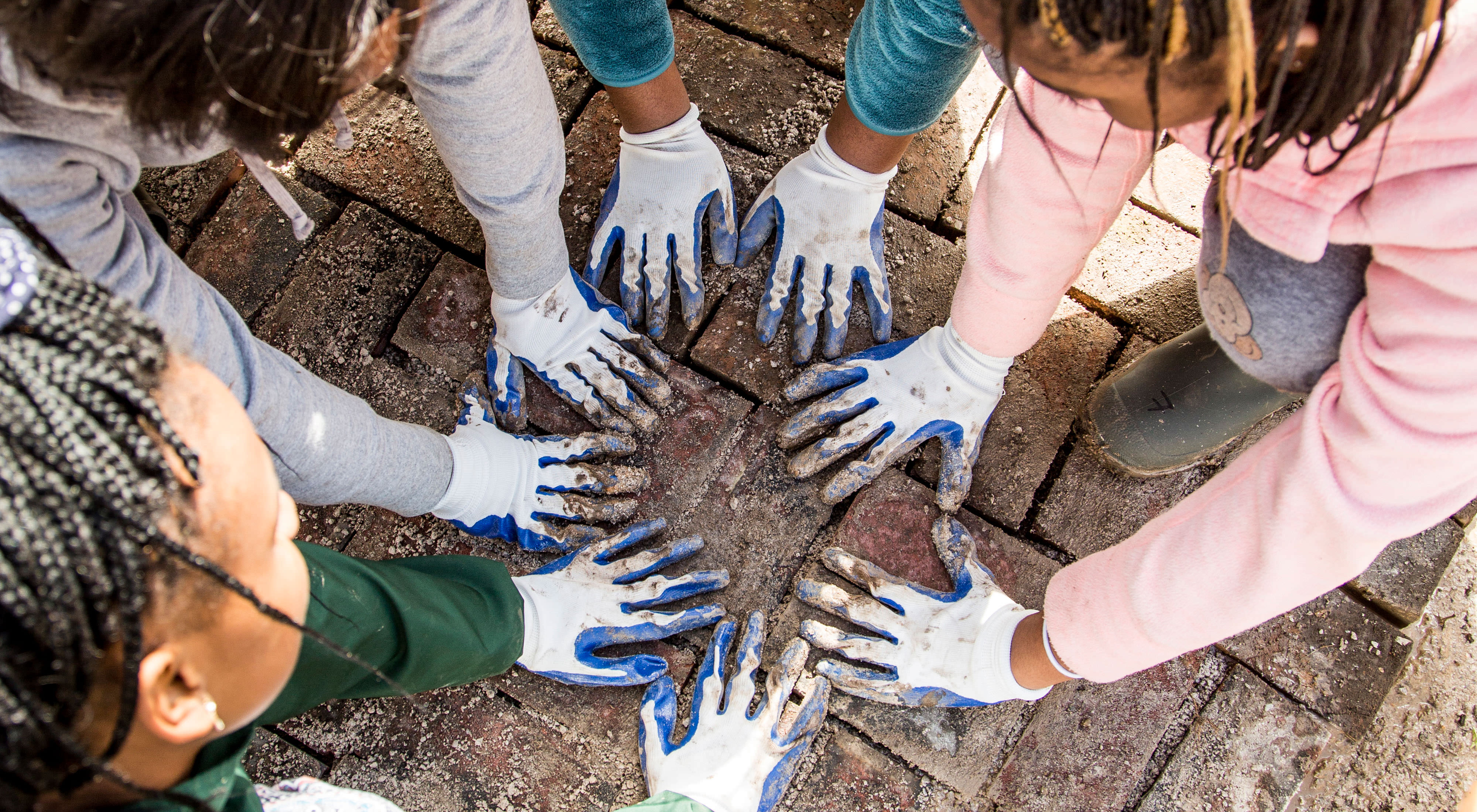Whole Measures for Urban Conservation
A collaboration of The Nature Conservancy's Cities Network and the Center for Whole Communities

In 2014, The Nature Conservancy expanded its focus to include cities and began by asking a series of questions. With opportunities to collaborate with diverse community groups and partners large and small, how would the organization align objectives across all interests? How would it get along with partners in the planning process and ensure all would have a voice and a degree of equity? How could this work be viewed with an eye toward justice and fairness, promote economic vitality, engage local communities, while helping nature and people be more resilient? And finally, how would success be measured?
To answer these questions, it was clear that The Conservancy could benefit from working with an institutional partner to bring in external perspectives to expand the capacity to work across different and engage diverse communities. The Conservancy’s nascent Cities Network, a group of urban practitioners across North America, partnered with Center for Whole Communities to develop Whole Measures for Urban Conservation, a reference point for conservation leaders interested in prioritizing benefits to low-income communities and advancing justice and equity in urban programs.
Based on Center for Whole Communities’ Whole Measures methodology, the guide supports program planning, community engagement and evaluation through the lens of socioeconomic impacts and equitable outcomes. It dedicates special attention to four primary areas of measurement that focus on the human impacts of conservation strategies as a priority for how we define success in cities.
The Cities Network team in Chicago volunteered to pilot the Whole Measures framework for their Burnham Wildlife Corridor program. John Legge, Urban Conservation Director, and Karen Tharp, Urban Stewardship Director, began by working with Center for Whole Communities and meeting regularly with the corridor’s collaborators. Together, participants created a shared vision for the project that ultimately:
- strengthened collaboration among partners;
- provided opportunity for group dialogue;
- improved clarity about roles;
- created a more balanced dynamic between partners; and
- increased The Conservancy’s capacity to work equitably with community-based organizations.
“Partnering with Center for Whole Communities and using Whole Measures is a different way of working and is changing the culture of how we work for all of us, including the partners on this project,” Karen Tharp says. “The Center for Whole Communities’ approach to developing shared spaces where all participants have an equal voice is powerful. We work with partners as well as community members on a shoestring budget. To have a process that brings everyone up to the same level is necessary.”
This equity-based approach to planning, community engagement and evaluation is critical as the Conservancy increasingly works with partners to advance urban conservation in socially- and economically-diverse communities.
Low-income communities are often the most vulnerable to the impacts of climate change and environmental degradation. Cities are--by their nature and history--places with deeply entrenched inequities. Without careful attention to issues of equity, urban conservation measures could exacerbate inequalities, thereby negatively impacting the health and well-being of communities that stand the most to benefit from nature. Conversely, urban conservation practitioners that convene equitable processes that respect and support the voices and vision of local communities can generate robust conservation solutions that are innovative and impactful.

